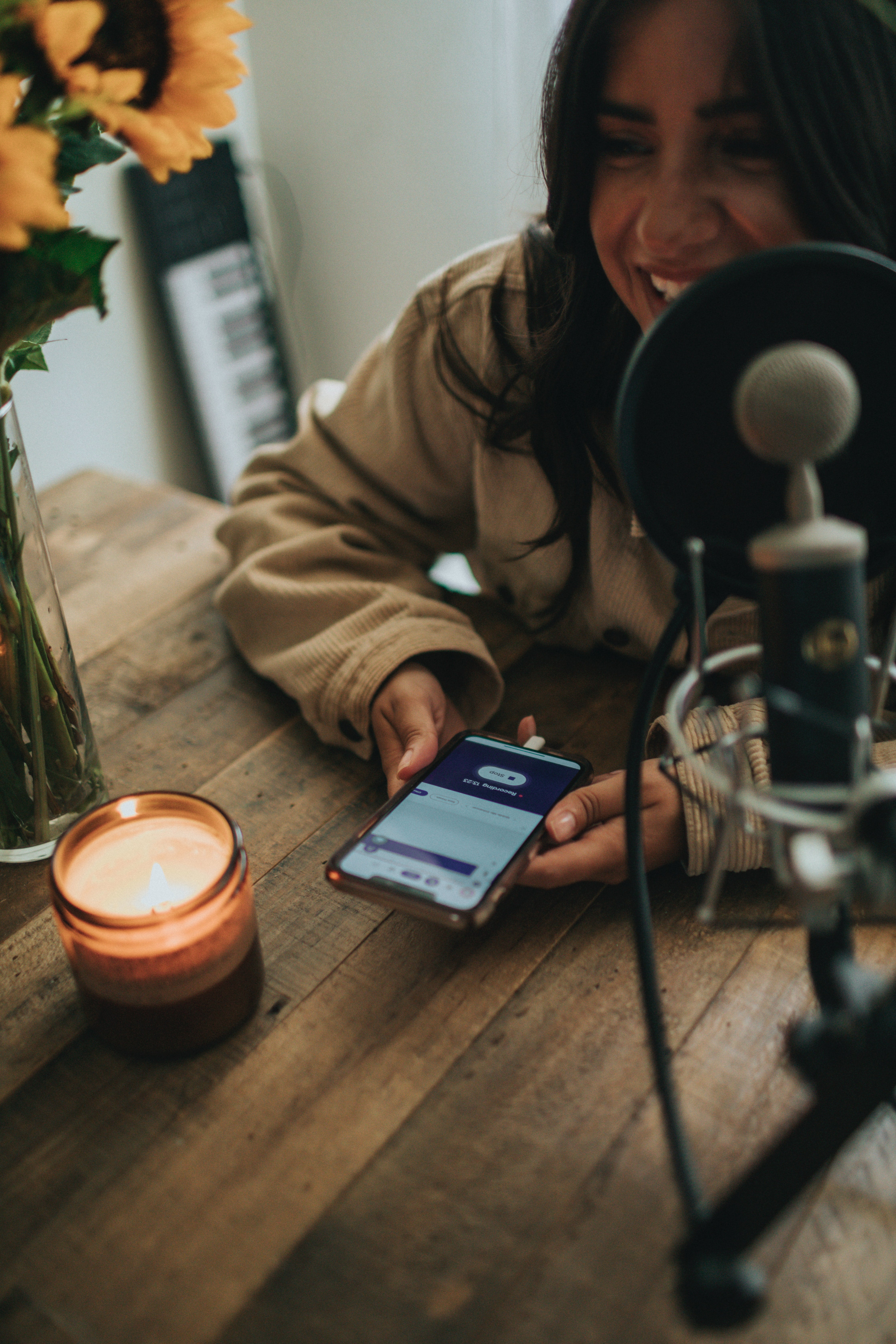
Although podcasting has been around for some time, educators are just now discovering creative ways to integrate podcasts into their teaching. For starters, some faculty are using podcasts to help deliver the content in their courses. Instead of a reading, they’ll assign students a short podcast to listen to, and then follow it up with an activity or a discussion. Podcasts really help break up the monotony of reading assignments, and by using them, you’re practicing good Universal Design for Learning (UDL). You can find podcasts easily by searching online or by using podcast apps and directories.
In addition to using podcasts that are already available, some faculty are also trying their hand at making their own podcasts. It might seem like a frightening task, but it’s fairly easy to do: all you need is a mobile device or a laptop to record yourself, and within an hour or so, you can have a podcast episode ready to share.
If you’re thinking about trying your hand at creating a podcast, here are five quick tips:
Tip #1: Start small. Don’t try and take on creating a full-blown weekly podcast, because it can be overwhelming at first. Start with just a single episode or recording, and get a feel for what it takes to create it.
Tip #2: Plan out your podcast in advance. Before you record, spend some time thinking about your podcast topic, as well as the presentation format you want to use. You may decide you want to interview other people in your podcast, or maybe just present the information all by yourself. Listen to other podcasts to get an idea of what you might want to do for yours. Then once you have an idea, create a script or an outline of the content that you want to cover.
Tip #3: Use a decent microphone. The microphones embedded on your phones or devices may be good, but they’ll pick up any background noises. Instead, use an external mic that you plug into your device, such as a podcasting mic, or a lapel mic, or even the earbuds/AirPods that come with your smartphone. You’ll also want to speak as close to the mic as possible and record in a quiet place, so your voice is captured clearly.
Tip #4: Choose a simple tool for recording and editing. Anchor is a great one if you’re new to the world of podcasting, and you can use it on either a mobile device or a laptop. Anchor’s drag and drop interface is easy to use, and it has a library of music and sound effects that you can choose from. Other tools you might also try for podcasting include Camtasia, GarageBand, and Audacity.
Tip #5: Create a transcript for your podcast. You want to make sure that anything you create is accessible to all of your students, so include a written version of the podcast with your audio recording. If you wrote a script for your podcast, then you can use that as your transcript. But if you recorded something unscripted, such as an interview, then you can use tools like YouTube, Otter, or Zoom to automatically transcribe your audio.
So, if you want to try something different with your teaching, consider adding some podcasts into it, whether you use episodes that others have created, or you create your own. Try adding them into your class discussions (either in-person or online) for students to listen to and then comment upon. Finally, consider giving students the option of creating a podcast for an assignment that would normally be written, and see what they come up with. You might be surprised!
Written by:
Brian Martin
Instructional Design Consultant
eCampus Center, Boise State University